The Elder Scrolls series from Bethesda is a big deal in open-world RPGs, with The Elder Scrolls III: Morrowind (2002), The Elder Scrolls IV: Oblivion (2006), and The Elder Scrolls V: Skyrim (2011) being the heavy hitters. Each game tweaks what came before, changing up gameplay, world design, and mechanics.
1. Setting and World Design
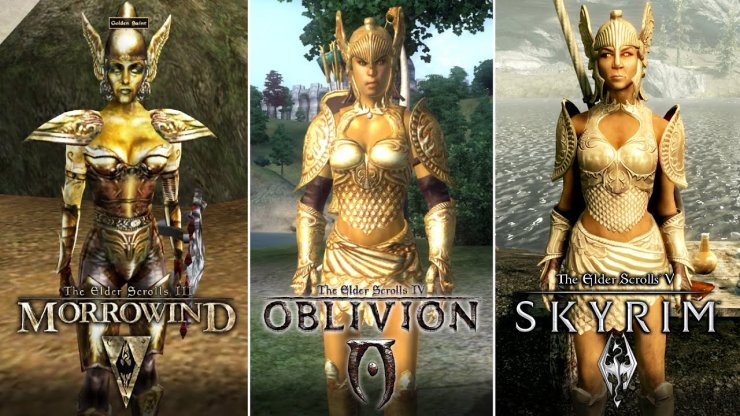
Every game drops you in a different chunk of Tamriel, which shapes how it feels:
Morrowind
Set in Vvardenfell, a volcanic island in Morrowind province, the game features an alien, ash-covered landscape with fungal flora and unique Dunmer culture. The world feels exotic and handcrafted, with minimal fast travel and a reliance on manual exploration (e.g., silt striders or boats). However, its smaller scale (about 10 square miles) and lack of voice acting for most NPCs can feel dated.
Oblivion
Takes place in Cyrodiil, a lush, temperate heartland with rolling hills and medieval aesthetics. The world is larger (16 square miles) and introduces fast travel to all major locations, making exploration more accessible but less immersive for some. Its iconic Oblivion Gates add a hellish dimension to the landscape.
Skyrim
Set in the rugged, Nordic-inspired province of Skyrim, it spans 15 square miles of snowy mountains, forests, and tundra. The world feels more dynamic, with random dragon encounters and a focus on verticality (e.g., climbing mountains). Fast travel remains, but the radiant quest system encourages exploration.
Key Difference
Morrowind throws you into a strange world where you figure out your own way, while Oblivion and Skyrim make travel simpler and go for more classic fantasy settings. Skyrim feels the most alive with its random events, though some folks say Morrowind’s detailed world is still king.
2. Character Creation and Progression
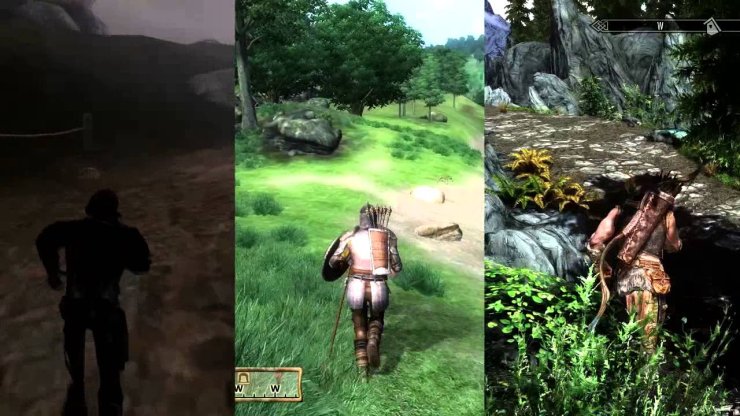
How you build and level your character changes a lot between games:
Morrowind
It’s got a deep, old-school system with 27 skills, 8 attributes (like Strength or Agility), and birthsigns for special bonuses. You pick a class with major and minor skills, and messing that up can leave you weak. There’s no level cap, so you can keep growing forever, and stuff like Athletics makes you run faster.
Oblivion
Cuts down to 21 skills and 8 attributes, and classes matter less. You level up by boosting major skills, but the game’s level-scaling means enemies get tougher as you do, which can lead to dumb stuff like bandits in endgame gear. You’re capped at level 50 (unless you cheat).
Skyrim
Ditches classes completely for a perk system with 18 skills. No attributes—just Health, Magicka, and Stamina. You get better at skills by using them and spend points on perks to specialize. There’s a soft cap at level 81, but you can keep going with Legendary skills. Standing Stones replace birthsigns for bonuses.
Key Difference
Morrowind gives you tons of options but screws you if you plan badly, Oblivion simplifies things but has wonky scaling, and Skyrim makes it easy to customize without stressing, though it’s less complex.
3. Combat
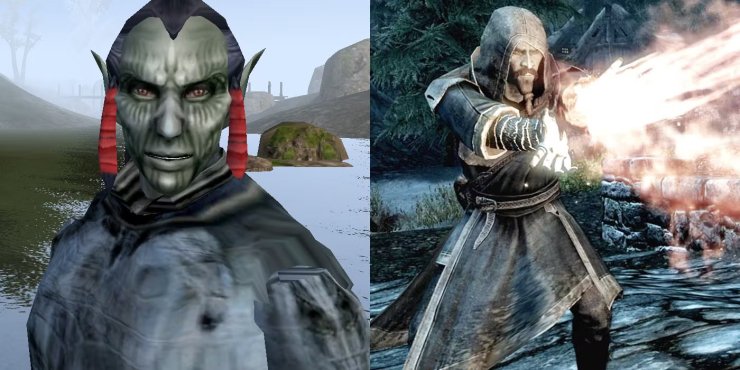
Fighting changes with each game’s tech and goals:
Morrowind
Combat’s based on stats, so your attacks can “miss” even if they look like they hit, which annoys some people. No stamina for swings, but skills like Athletics help you move. Magic and bows are flexible but awkward, and low skills can make spells fizzle.
Oblivion
Switches to real-time combat where skill matters more than dice rolls. You can block or do power attacks, but it feels clunky. Magic’s smoother, with custom spells, though archery’s still basic. Level-scaling makes fights feel samey sometimes.
Skyrim
Makes combat feel heavier, with dual-wielding, cool kill animations, and dragon shouts for extra flair. Stamina’s a big deal, and magic’s simpler but less varied. Perks let you tweak your style, and it’s the most action-packed, even if it’s not perfect.
Key Difference
Morrowind’s combat is old-fashioned but rewards smart builds, Oblivion tries to mix RPG and action but isn’t smooth, and Skyrim feels the most modern and fun, though it dumbs down magic a bit (IGN, 2011).
4. Quests and Storytelling
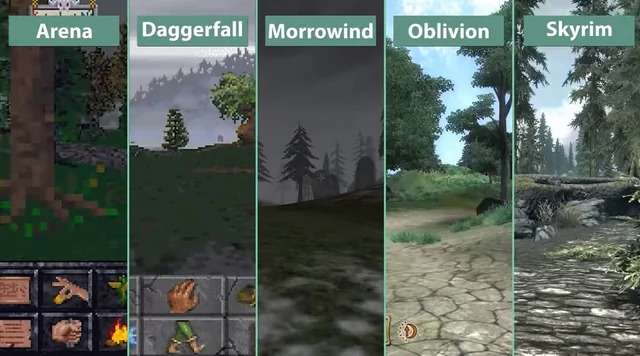
The way stories and quests work shows how the series changed:
Morrowind
It’s all text-based with barely any voice acting, so you get deep lore and faction stories. The main quest lets you tackle it in different ways, even skipping big parts. No quest markers—you follow journal notes or NPC directions, which can be cool but tricky.
Oblivion
Everything’s voiced (though some actors are overused), and the main story with Oblivion Gates and Martin Septim feels like a movie. Quest markers tell you exactly where to go, which helps but cuts down on exploring. Guild quests, like the Dark Brotherhood, are awesome but more linear.
Skyrim
Mixes voiced dialogue with a focused Dragonborn and civil war story. Radiant quests keep things fresh but can get repetitive. Markers are still there, but random dragon fights push you to explore. Guild quests are solid but shorter than Oblivion’s.
Key Difference
Morrowind lets you drive the story with tons of lore, Oblivion goes for big, guided quests, and Skyrim mixes easy access with random events, though some say it’s less ambitious than Morrowind.
5. Modding and Technical Aspects
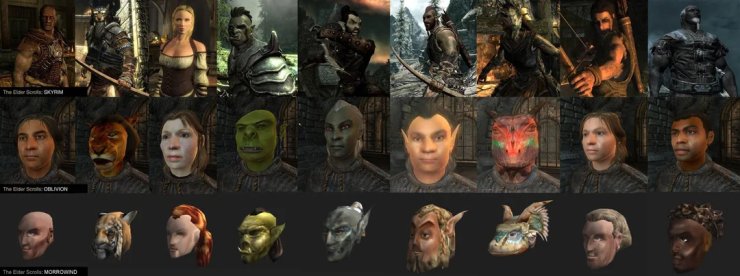
Modding and tech improvements made each game last:
Morrowind
Runs on the Gamebryo engine with graphics that were great in 2002 but look rough now. Modding’s huge, with the Construction Set letting fans rebuild the game (like Tamriel Rebuilt). No autosaves or markers make it tough.
Oblivion
Upgrades Gamebryo with better visuals, physics, and creepy NPC faces. Modding got massive, with new quests and overhauls (like Oscuro’s Oblivion Overhaul). Autosaves and tutorials make it friendlier.
Skyrim
Uses the Creation Engine (still Gamebryo, but fancier) for awesome landscapes and lighting. Modding’s insane, with Steam Workshop and Nexus Mods offering everything from new stories to graphics (like Enderal). It’s super polished, with tons of re-releases.
Key Difference
Morrowind’s modding is great but held back by old tech, Oblivion opened the floodgates, and Skyrim’s modding and slick engine make it endlessly replayable.
Conclusion
Morrowind, Oblivion, and Skyrim each bring something different. Morrowind is for hardcore players who want a deep, open world and don’t mind working for it. Oblivion mixes old RPGs with easier systems and killer quests, even if scaling’s a mess. Skyrim nails polish and fun, with modding that keeps it fresh, but it’s lighter on story and complexity.
Diehards swear by Morrowind for its freedom and lore. Newer players love Skyrim for being easy to jump into. Oblivion sits in the middle, loved for its stories but dragged by old mechanics.

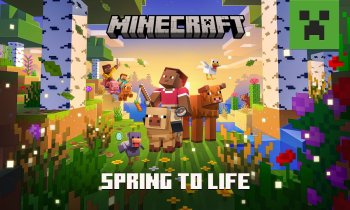


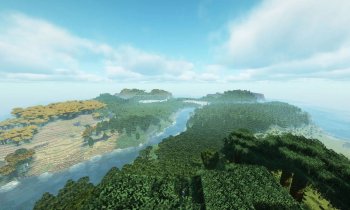





Comments